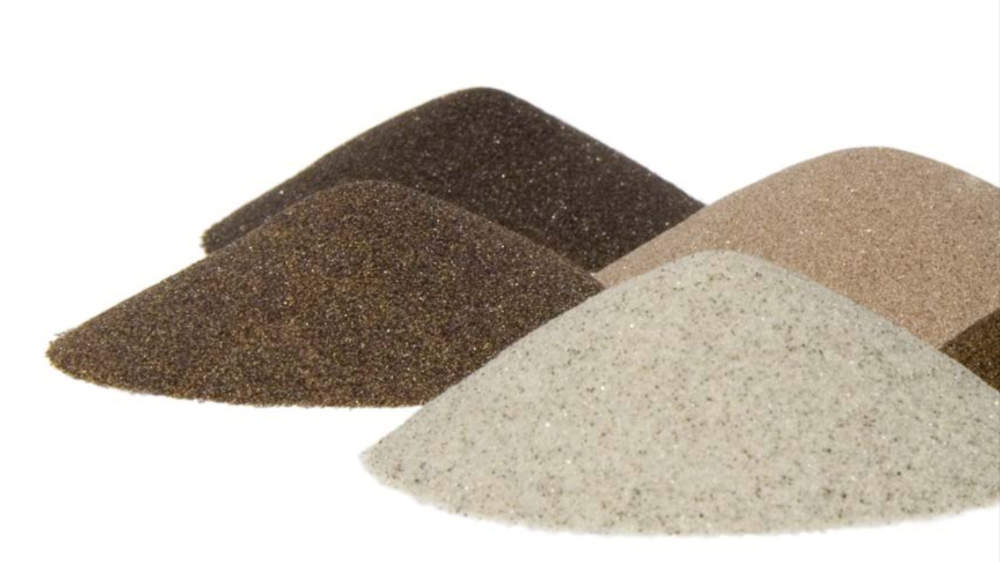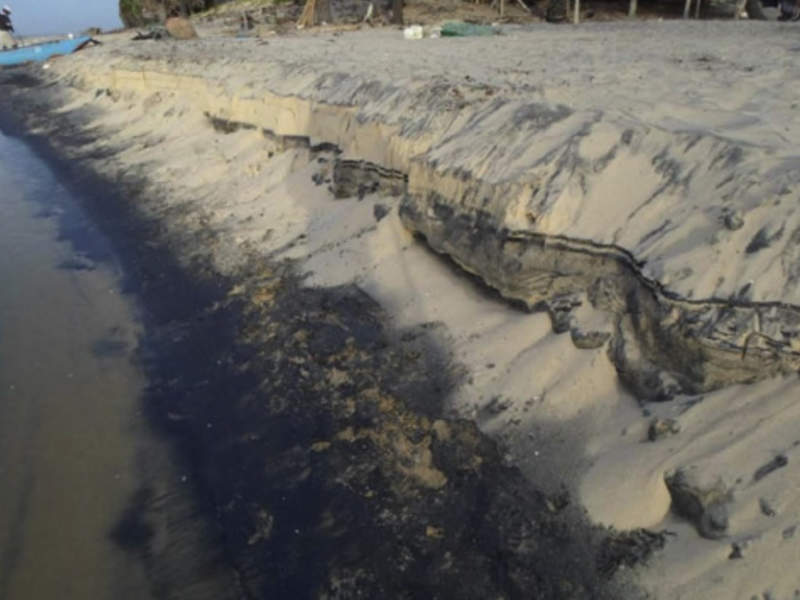Mineral sands show why you don’t need headline makers to succeed

Mineral sands are a solid choice for resource investment. Pic: Getty Images
- What exactly are mineral sands and why are they important?
- We take a deep dive into what makes the mineral sands sector tick
- And take a closer look at the ASX companies in the space
There are commodities that dominate headlines and there are others like heavy mineral sands (HMS) that coast under the radar yet are consistently solid returns to be the bread and butter for several companies on the ASX.
So what exactly are HMS and what makes them valuable enough that they can deliver significant profits for producers such as Iluka Resources (ASX:ILU) ?
Delving into the sands of time
Mineral sands are a group of minerals such as ilmenite, rutile and zircon – with monazite and xenotime sometimes thrown into the mix – that are commonly found together as coarse and fine grain sands.
Originally formed as crystals in igneous rocks such as granite or basalt, these minerals were weathered over the course of millions of years into grains with higher densities compared to other mineral constituents – such as quartz – that form the bulk of typical crustal rocks.
These grains were then transported by wind, water, or concentrated in situ to form sedimentary deposits that would then undergo weathering again, a process that be repeated to concentrate the heavy minerals in dune sand deposits, river sand sequences, shoreline beach sands and shallow marine sand bank and nearshore sediments.
Most current HMS deposits were formed between 1.8-12 million years ago when massive changes in sea levels left them many kilometres away from today’s beaches. These are either present at surface or hidden beneath layers of younger sediment.
Valuable minerals
HMS are primarily valued for their Ilmenite, a mineral containing oxides of titanium (40-60% of the total content), iron and various minor amounts of other metallic elements.
It is processed to produce titanium dioxide that is primarily used as a pigment or opacifier in a wide range of every day applications including paints, plastics and specialised chemicals.
It can be processed to produce titanium metal, which is light-weight, strong, corrosion resistant and with a high melting point that makes it suitable for aerospace, medical, and specialist manufacturing applications.
“However the high cost and technical difficulty of producing titanium metal limits its use more broadly,” Titanium Sands (ASX:TSL) director Dr James Searle told Stockhead.
Rutile is another titanium feedstock though its high refraction index makes it especially valued for use in the pigment industry.
It is not just about titanium though.
Zircon is used in the ceramics industry to make tiles and plates opaque though its high melting point and corrosion resistance also makes it useful in the manufacturing process for foundry moulds, refractory bricks and molten metal moulds.
Rare earth minerals monazite and xenotime can also sometimes be found in HMS deposits, adding another commodity – one that is valued for manufacturing permanent magnets found in electric vehicle motors and wind turbines – into the mix.
Mineral sands mining and processing
The shallow depth of HMS deposits means they are typically mined like any conventional surface bulk mining operation through the use of bulldozers, excavators and trucks.
Topsoil, subsoil and clay is removed and stockpiled separately to allow it to be progressively returned in correct order after mining. Dredging of sediments is used where ground water or marine conditions permit.
Despite the ease of mining, Searle notes that there are several factors that determine if the deposits are economically exploitable or not, these include:
- The amount of barren sediment overlying the zones of heavy mineral concentration
- The value of the types of heavy mineral species in the deposit
- Presence of minor elements in the individual mineral species that can also influence the value of that product to an end user
- Characteristics of the host sediment body as finer clay sized particles can complicate recovery of heavy minerals
- Variable economics of the different mining and extraction technologies required for each heavy mineral deposit; and
- Local environmental impacts, such as on the ground water table, land use and conservation, and rehabilitation options.
Processing tends to be relatively simple compared to other commodities with mainly gravity and magnetic separation used to produce a crude HM concentrate containing the higher value heavy minerals along with a variable component of low value or waste heavy minerals.
A significant number of operations take things a further step by separating the crude concentrate into specific saleable HM products.

“As separate mineral concentrates, they have considerable more value to buyers than the crude heavy mineral concentrate, but this has to be offset against the capital and operating cost of the additional processing,” Searle noted.
“Some heavy mineral operations will undertake limited metallurgical enhancement (beneficiation) of some of the mineral products to further increase their value. The various heavy mineral products are sold on international markets to a processors who make a variety of end products.”
Playing in mineral sands
So besides established majors such as Iluka and Rio Tinto (ASX:RIO) , just who are some of the ASX companies engaged in the mineral sands space?
TSL’s flagship Mannar Island HMS project in Sri Lanka’s northwest is a >12m thick sequence of young unconsolidated sands that extend in two continuous zones that are 10-12km long and 1-3km wide, which are contained within the 26km by 6km Mannar Island that is linked to the mainland by road, rail, and power infrastructure.
Over 5000 auger and reverse circulation holes completed over the project have been used to define a significant resource of 318Mt grading 4.17% total heavy minerals (THM) which includes a continuous 10km by up to 2km wide zone with a resource of 82Mt at 6.03% THM.
The resource contains extremely low levels of fine material (slimes) and is open at depth with further drilling expected to increase resource estimates.
It is exposed at surface with no overburden and is amenable to low cost efficient bulk dredge mining, which will be contained within a progressing dredge pond with refilling of the mining void and land surface rehabilitation following the migration of the dredge pond.
Processing will use gravity concentration followed by electrostatic and magnetic separation to produce an ilmenite product, rutile, zircon and garnet that will generate over $2bn in initial revenue.
The company recently secured government approval to consolidate its five main licences, a key step towards securing an Industrial Mining Licence for the project.

Sovereign Metals (ASX:SVM) operates the Kasiya rutile-graphite project in Malawi that is known to be the world’s largest natural rutile deposit with a resource of 1.8Bt grading 1% rutile and 1.4% graphite, two-thirds of which is in the higher confidence indicated category that provides enough certainty for mine planning.
This is a significant amount of natural rutile that could be brought into the market at a time when existing supplies are being depleted.
Kasiya would cost US$597m to build but generate US$415m in average annual EBITDA and US$16bn in revenue over its first 25 years of operations, according to a pre-feasibility study released in 2023.
At 222,000tpa it would be the world’s largest single rutile operation and one of the largest ex-China flake graphite producers at 244,000tpa.
Costs of US$404/t would make it the lowest cost producer of both products around the world.
It has certainly attracted the attention of Rio, which recently increased its stake in the company up first from 15%, when it first made a strategic investment in 2023 to 19.76% in June 2024 and then up to 19.9%.
Petratherm’s (ASX:PTR) 645km2 Muckanippie project in South Australia’s northern Gawler Craton prospective for titanium-rich HMS, vanadium and gold.
Outcrop samples recorded grades between 10% and 50% titanium dioxide with mineralisation occurring from or near surface and is present as heavy mineral bands that extend at least 6km to the north.
Assays are currently pending for a 100 hole aircore drill program across the project while an initial trial heavy mineral sand separation test using composite samples collected from historical drill holes targeting the Rosewood prospect returned significant 12.48% and 12.01% HM from the upper zone.
Laboratory analysis confirmed the HM fraction contains high titanium mineral content of up to 65% titanium dioxide, an indication that a significant portion of higher value minerals are present.
Image Resources (ASX:IMA) stands out as former HMS producer at the now exhausted Boonanarring project in WA that is now firing on all cylinders towards becoming a producer again.
The company accelerated construction works at the Atlas project after receiving all required approvals during the September quarter and is moving the Boonanarring wet concentration plant and associated equipment for transport to its new project.
Atlas has a proved and probable ore reserve of 5.5Mt at 9.2% THM that hosts a high-value mineral assemblage with 12% zircon, 8% rutile, 5% leucoxene, 53% ilmenite, and 1.1% monazite.
Highlighting its ambitions, IMA expects to commission the plant and start producing heavy mineral concentrate in Q1 2025 with first shipments in March-April 2025.
At Stockhead, we tell it like it is. While Titanium Sands, Sovereign Metals and Petratherm are Stockhead advertisers, they did not sponsor this article.
Related Topics

UNLOCK INSIGHTS
Discover the untold stories of emerging ASX stocks.
Daily news and expert analysis, it's free to subscribe.
By proceeding, you confirm you understand that we handle personal information in accordance with our Privacy Policy.








